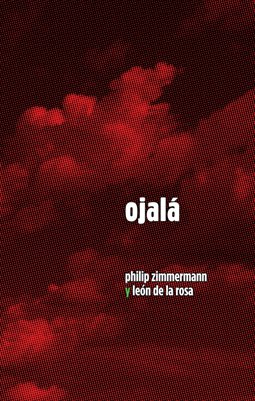We recently added a room onto our adobe house in Tucson by enclosing part of a porch area. We needed more room for books and thought the added bookshelves would allow us the luxury of being able to reorganize our rather large book collection.
The shelves on the right are the new ones that were finished last month:
So I went through my artists’ book collection and carefully pulled out any photobook that I thought was either by artists who self-identified as “photographers” or where I felt that photography was the primary subject and medium that was used. Many of these books were ones where the photos were not used in the standard ubiquitous monograph form that so many photographers love, nor were they coffee-table-type publications that galleries supported by subvention, and used as a form of publicity to raise the profile of their stable of artists. Those above-mentioned books were already segregated out and in the photography book section, not in the artists’ book section. Of course there is nothing wrong with the photographic monograph book. It does the job if that is what one needs it to do. But books are capable of so much more.
These are the shelves in my studio with big gaps showing where many of my photo-based artists books moved over to the new shelves in the main house:
The photobooks that I was moving now were different. I transported the photobooks that were in my artists’ book section (they did not follow the above description) to the new bookshelves and they started to fill up fast. I moved there such artists as John Gossage, Jim Goldberg, Martin Parr, Ken Ohara, Nathan Lyons and all of Robert Frank’s books. Clif Meador, Francois Deschamps, Cristina de Middel, Jason Fulford, Mike Slack and Ed Panar and all of the wonderful books put out by the Archive of Modern Conflict made the move to the photo area too. The new shelves were filling up fast. I wondered about Roni Horn, Doug Aitken, Christian Boltanski, Ed Ruscha, Alfredo Jaar and Sophie Calle and some of the other blue-chip ‘fine artists’ who make photo-based artists books, but decided that they were more conceptual, more like artists’ books, and really only used photos as tools –not as primary medium.
But then some, indeed many, of the other books I had already moved fit the description of ‘artists’ books’ too. I decided I had to think more about what defined ‘artists’ book’ when talking about photobookworks, the term that was coined by Alex Sweetman in the 80s to overcome this confusion about where photobooks stood on the artists’ book continuum, and what context they had with the history of the photobook. Trying to weave my photo-based artists’ books into my regular photobook collection was not working out. Many of the books, like those of Bill Burke, Adam Broomberg + Oliver Chanarin, Keith Smith, Clif Meador, Mishka Henner, Christian Patterson, Tate Shaw, Brad Freeman and Todd Walker just did not belong with my traditional photobooks which included my history of photography books or my monographs of Sally Mann, Edward Weston and William Eggelston. Something felt very wrong about them sitting on a shelf next to a book of the collected photos of Ray Metzger or Josef Sudek, as much as I liked their images.
The term artists’ books has been much bandied about in the photo community in recent years and is, I think, used perhaps a little too loosely. What makes a photo-based book an artists’ book? To step back a little, the term artists’ book, even outside the photobook world, is a term that is still contested, and there are many camps that argue about what characteristics determine what makes an artists’ book an artists’ book. I think that most practitioners would agree that an artists’ book is a book that is not merely a reproduction of images or texts that exist in another form, but a new time-based medium unto itself, with a unified conceptual content. The ‘book artist’ is in control of the creation of the entire book. In almost all cases this would eliminate the use of a book designer or even possibly a pushy publisher who “knows what will sell”. Unless the designer is under the close supervision of the artist, the artist him or herself must be the overall creative vision with an artists’ book. Collaborations do exist, but then all contributors are given credit as the creators. This idea of what an artists’ book should be requires that the artist-photographer must educate themselves on book structure, history and production, typography, and on a more meta level, how to think and work in terms of a time based-medium, using sequence, rhythm, narrative arc and so on.
The traditional artists’ book world, the world where lives d’artistes also exist, places a high degree of importance on craft and method of reproduction. Many people in the traditional artists’ book world, who have in many cases come out of the printmaking world, conflate letterpress printing and book craft with artists’ books. This is of course silly, and because letterpress is not especially good at reproducing photography, is also wrong-headed. If one can print one’s own book, that’s great, but especially now with cheaper access to offshore offset printing and digital print-on-demand, doing one’s own production work is hardly necessary.
There are a number of photographers who are really thinking of, and using, the book form differently, and making exciting artists’ books. There may be some obstacles to the broader acceptance of photobookworks (both the term and the idea) but the trend is encouraging. I have found that photographers in general are quite conservative, not necessarily in their image-making but in the way their work is presented in book form. Even Christian Patterson’s Redheaded Peckerwood, which I will mention again later, is considered quite radical in photo circles, but is actually pretty conservative by artists’ book standards. I have been on the thesis committees of dozens of photography graduate students and almost invariably, after I have given some suggestions of how to make a really interesting photographic artists’ book that works with their thesis content, they default to a conventional boring monograph. Even if it’s a cleverly sequenced set of images, it’s still almost always a series of similarly-themed ‘greatest hits’ photographs that would be better on a gallery wall. They have not grasped that books are different, work differently, and have, potentially, through their intrinsic “bookish” qualities, a very different attraction and power.
Many photographers also seem to have an objection to the use of any text other than a very simple descriptive title, usually on the left hand side of a two-page spread. I think that is true of many photographers, at the end of the day they really only want a monograph. There is nothing wrong with that, but please do not call it a photo-bookwork or a photo artists' book.
I have found that photographers, more so than any other art discipline, prefer to be called photographers and not artists. This seems like such a silly distinction but it is there and perhaps it comes from the fact that photography historically has been, like design, a commercial activity and was very late to the art school academy. This might sound somewhat pretentious, but to make artists’ books one has to think like an artist, photography is just the tool, and I think that is hard for some. This photographers that have done this in the past, like Keith Smith, Todd Walker, Joan Lyons, John Wood and Robert Heinecken have been somewhat marginalized in the field, though that is changing. Photographers would also do well by learning more about the history of visual books: I have found most to be shockingly ignorant. The many series of histories of photo books like The Book of 101 Books, the series by Gerry Badger and Martin Parr, The Russian Constructivist Book, and the recent series of histories of photobooks from Holland and China and other countries are doing a lot to educate. But there are many other visual books that are not photographic that novice bookmakers could learn much from.
These new histories of the photo book are a wonderful addition to the discourse, but they do not really talk about the nuts and bolts of what makes the books work. What changed in the way that Walker Evans sequenced the images in American Photographs, to the way Robert Frank sequenced his images in The Americans, to the way that Nathan Lyons sequenced his images in Notations in Passing, to the way that Paul Graham sequenced his images in a A Shimmer of Possibility or Christian Patterson sequenced Redheaded Peckerwood, or Christian Marclay’s Fourth of July? These are things that all photo students should be taught and it would produce far better books.
And how about more radically conceived and structured photobookworks? There are a few out there. Broomberg+Chanarin’s Bible is a great example. So is Brad Freeman’s Wrong Size Fits All, Clifton Meador’s Nameless Dead or Cristina de Middel’s new This is What Hatred Did. Along with artist-photographers willing to take chances and break the monograph hegemony, there also has to be a more educated buying public. There are far more collectors of photography books out there than there are buyers of traditional artists’ books, we have to get them aboard too. This symposium is part of what will make that happen –as well as more critical writing like in the upcoming issue of Afterimage, JAB, and CBAA’s Openings. Publishing successes help too. A number of books like Redheaded Peckerwood, de Middel’s The Afronauts, Broomberg and Chanarin’s The Bible, have gone into second editions, or could have since they quickly sold out. And there are interesting publishers taking some risks: presses like Nazraeli, Mack, Ice House, Siglo, Archive of Modern Conflict and Little Brown Mushroom to name just a few.
Meanwhile, I have decided that it is important to make that distinction on my bookshelves between photography books and photo-bookworks and have started moving back any photobooks that I feel are artists’ books and not just books on photography –or that merely reproduce photographs. They are different things, and although the communality of the use of photography can make that difference sometimes a little hard to determine, when one looks at these books there is another kind of intent which make them distinctive works.
I am hoping to distill the above argument down to a much more concise, succinct, presentation. I am to give the talk at the 2016 VSW Biennial Photo-bookwork Symposium in Rochester at the end of June. I plan to have visual images for that lecture and possibly a graphic continuum chart that has at one end "photography book" and on the other end "photo artists' book" and then have names and characteristics along that continuum –without making any value judgements.






